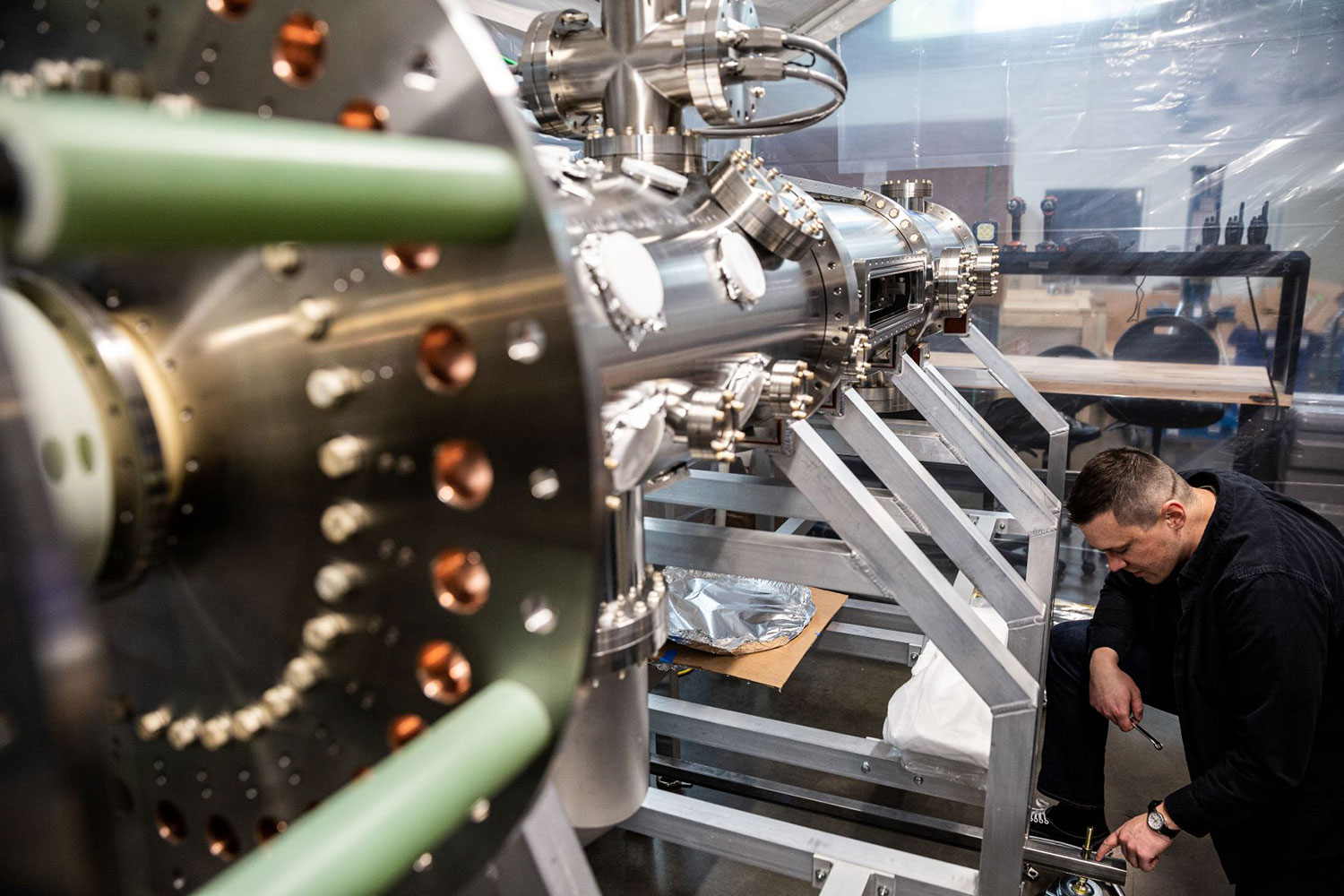
Nuclear fusion energy is a clean, efficient, powerful, and bountiful source of electricity that will revolutionize the world. But delivering an economical and reliable fusion reactor has proved to be a tough nut to crack since the 1950s.
Seattle-based Zap Energy has reached two major milestones that could nudge it ahead in the race to offer low-cost, carbon-free energy – a $160 million in Series C funding and a successful test of a prototype fusion reactor that could pave the way to a commercial version. The company says its approach to fusion energy – potentially an entirely green source of renewable energy – is much smaller, simpler, and cheaper than other approaches.
Last week, Zap Energy created the first plasmas in FuZE-Q, the company’s new prototype designed to reach the long-sought target of Q=1, where the process of nuclear fusion inside a plasma yields more energy than was consumed to create it. The first plasmas in FuZE-Q come on the heels of progress last year, showing the company’s innovation of sheared-flow stabilization continues to extend the lifetime of Z-pinch plasmas at 500 kiloamps (kA) of current.
Zap Energy’s technology is incredibly elegant and does not require any superconducting magnets or high-powered lasers. In Z-pinch fusion, a line of plasma carrying an electrical current generates its own magnetic field that pinches the plasma until it’s hot and dense enough for the required reaction to occur.
“Z pinch has long been an appealing way to achieve nuclear fusion, but for many years researchers considered Z pinch’s plasma instabilities to be an insurmountable challenge,” says Uri Shumlak, who serves as Zap Energy’s Chief Science Officer and is also a UW Professor of Aeronautics & Astronautics. “We’ve shown through both simulation and experiment that sheared flows can stabilize fusion plasmas and that the stability should extend to a commercially viable scale. The Zap Energy team has made rapid progress since this technology moved out of the lab, especially with the recent team and investment growth.”
The more current used to make a Z pinch, the hotter and denser it will be, so climbing to higher and higher currents is a key part of advancing Z-pinch fusion. Having reached 500 kA and the limits of its current hardware capabilities this past fall, Zap Energy will now begin operation on its next-generation FuZE-Q and install a cutting-edge power bank later this year. The team’s scientific modeling predicts the Q=1 equivalent point will occur around 650 kA of current. This is an equivalent point of a scientific energy breakeven, where the energy coming out of the Z pinch will be greater than the energy put in to create it.
“FuZE-Q is the fourth generation of Z-pinch device that we’ve built and is undoubtedly the most ambitious,” notes Brian A Nelson, Chief Technology Officer. “We designed it to be versatile, resilient, and tunable in lots of ways that will be critical as we ramp to higher currents, temperatures, and densities.”
“To be a practical energy source, we need to go well beyond Q=1, but if you want to get fusion on the grid in time to make a difference to the planet, then the ability to iterate quickly on a small, cheap platform, is absolutely vital,” says Zap Energy’s President Benj Conway. “We can design, build and test systems at a much faster pace than other approaches, and we are working on technology in parallel that we are going to need on the other side of breakeven.”
The $160-million Series C funding will help it to further develop its Z-pinch technology and hopefully bring it to the market. The company also envisions achieving this with mass-manufactured reactors that are small enough to fit inside a garage.
Zap Energy’s FuZE-Q fusion device creates the first plasmas
Source: Tambay News

0 Comments